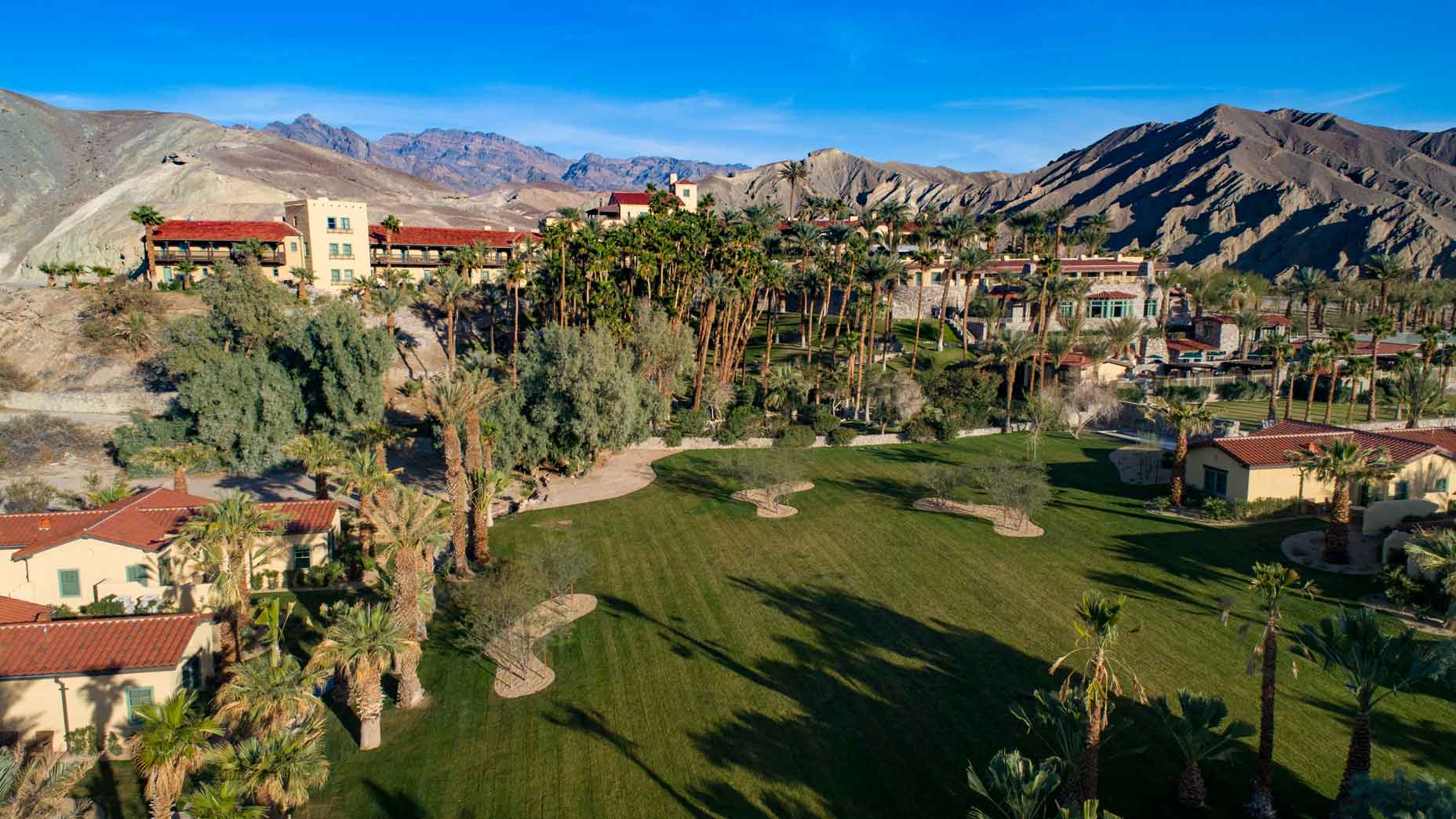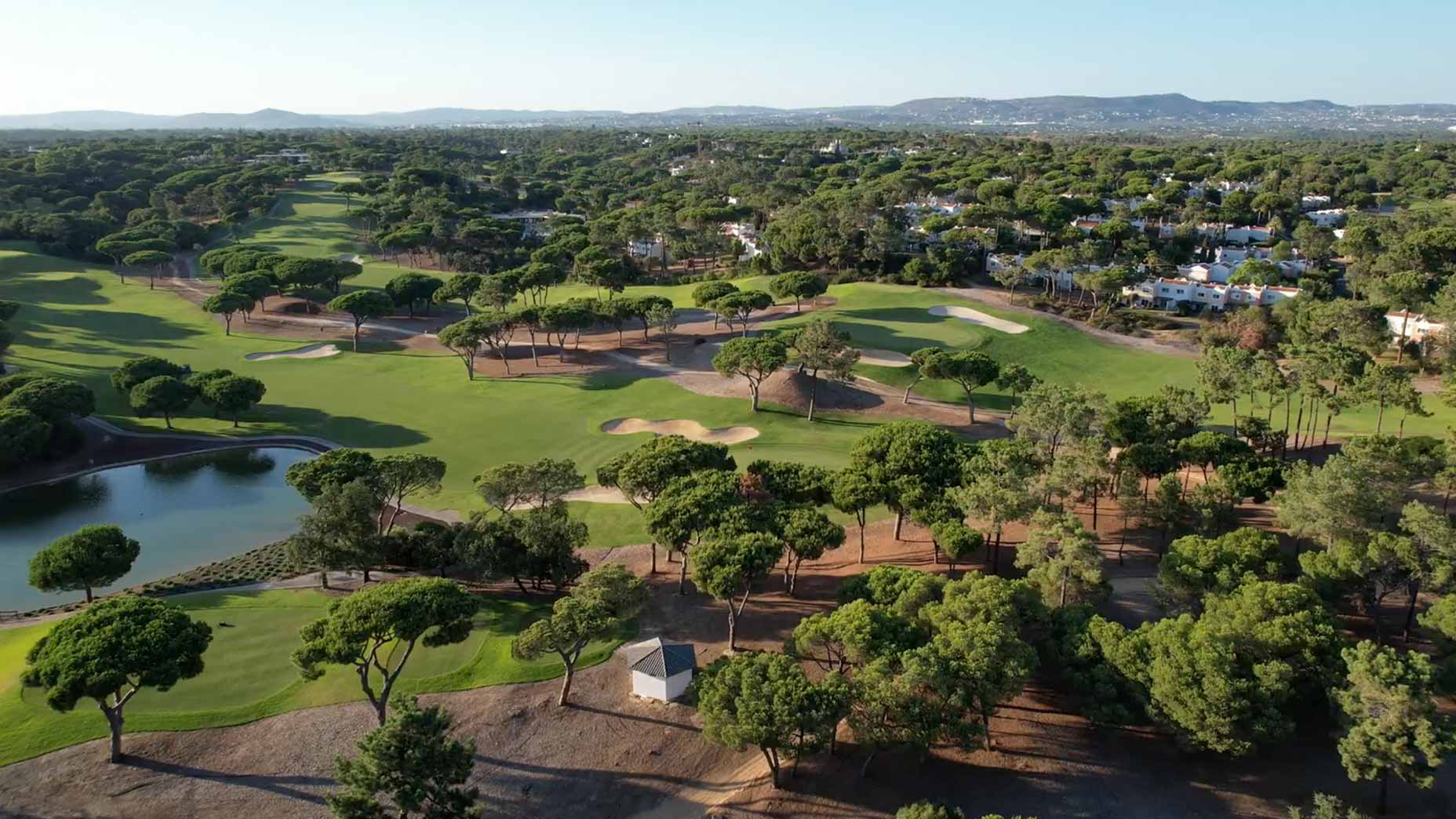DEATH VALLEY, Calif. — As you drive into Death Valley National Park, out through the desert west of Las Vegas, just across the border into California, you pass a sign for Devil’s Golf Course. Don’t be fooled. It is not a course but a vast, craggy canvas of eroded rock salt that, people say, resembles a place where Lucifer might peg it.
For other golfers, there’s a better option, some 14 miles up the road. The only real course in Death Valley, it’s the lowest-elevation layout in the world, in one of the hottest spots on earth.
Ringed by boundless acres of salt flats, sand dunes and startling rock formations, at the searing heart of the Mojave Desert, Furnace Creek Golf Course could pass for a mirage, a shimmering swath of green in a Mad Max landscape. It is, in fact, a literal oasis, fed by ancient underground springs.
The game’s roots in this improbable locale reach back to the late 1920s, when the caretaker of a date-palm orchard roughed out a three-hole routing as an amenity to a newly built hotel. In those days, borax mining drove the area’s economy. But even then, before their business waned, the mining magnates realized that Death Valley itself — and the tourism it stood to draw — represented a better long-term bet.
And that golf could be part of the appeal. The expansion of the course took place in phases: to nine holes in the early 1930s, and then a full 18 in 1968. Some 30 years after that, Perry Dye, Pete Dye’s son, renovated the whole shebang, configuring the grounds into a par-70 that, due to its sunken elevation, plays longer than its 6,236 yards.
“It’s the opposite of mountain golf,” says Furnace Creek head pro Jon Skaggs. “If you’re thinking 7-iron, you should probably hit a 6.”

On April 1, 1907, the following ad appeared in the Death Valley Chuck-Walla, a small newspaper published by a local mining camp: “Would you enjoy a trip to hell? You might enjoy a trip to Death Valley. Now! It has all the advantages of hell without the inconveniences.”
The squib was an April Fool’s Day spoof. But it foreshadowed a truth. A host of creature comforts were to come.
The original resort, known at its birth as the Furnace Creek Inn, is now called The Oasis at Death Valley and has four different lodging properties: The Inn at Death Valley, The Ranch at Death Valley, Inn Casitas and the Ranch Cottages. Combined, they offer a wide menu of amenities and diversions, including a spring-fed swimming pool, a wellness sanctuary, horseback riding, bike rentals, guided stargazing and more.
Some of these activities are seasonal. But the golf is year-round, with safety-minded seasonal restrictions. In the hottest months, when the mercury often cracks 120 degrees, 18-hole rounds must begin before mid-morning. Sunrise is a popular starting time. Even then, coyotes often outnumber carts.
Going low at Furnace Creek has more than one meaning. The course record is 61. But anyone can take it deep. The property bottoms out on the 5th green, at 214 feet below sea level. Not that you notice any severe drop-offs. The grounds are largely flat, with nuanced greens, and views that stretch to the Panamint mountains in the distance. In the winter of 1849, a group of wayward 49ers who’d gotten lost seeking a shortcut to the Sierras, looked down from those peaks at the valley that had nearly killed them when one of them supposedly remarked, “Goodbye, Death Valley.”
So goes the tale of how the area was christened.
As for Furnace Creek, it was common usage by the 1860s, and it’s not hard to imagine how it came to be. In the summer, the temperature rises quickly with the sun and continues surging until sunset, as warm air, trapped by the surrounding mountains, cycles back to the valley floor.
Out on the course, when the wind kicks up, it can hit you like an oven blast. Relief comes in the form of drinking stations, and the shade of the tamarisk trees that line most fairways. Yet the greatest comfort might lie in the sense of solitude and the lonely beauty of the landscape. You’re playing a course unlike any in the world, and you’ve got it largely to yourself.
Never mind the temperatures. How cool is that?









